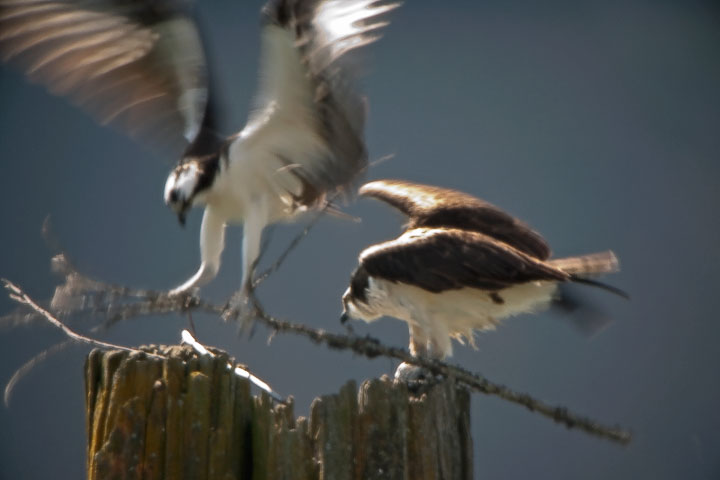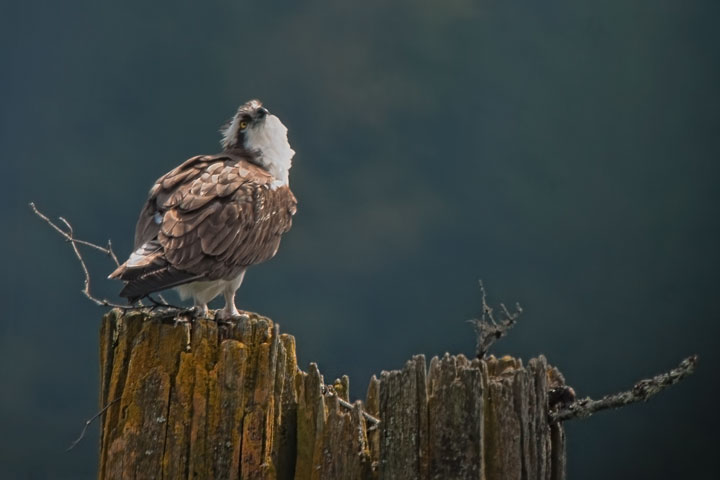The Kootenay Lake website offers a discussion and many pictures of local ospreys.
Ospreys are back at the Lake. If they have been here previously, they will usually reclaim an earlier nest. If the bird is a first–time breeder or the nest was destroyed, a new one must be built. This seems to involve a fair bit of trial and error. Below are two pictures of the same piling taken on different years. Each time sticks were brought in; each time after a bit of consideration, the site was abandoned.
In April 2009, ospreys brought sticks to this piling and then abandoned it.

In April 2011, an osprey brought one stick to the same piling, pondered for a while and left.


This is just my observation of past nests. All nests had a flat base. These pilings do not have that.
Carol, you may have identified the reason the ospreys abandoned the trials I show. Of course, a reasonable question is why they would even start a project on such a surface. Probably, the answer is that ospreys didn’t evolve to insist on a flat surface. Most of the pre-settlement nests were on snags which are as ragged as that piling. Indeed, ospreys still nest on such irregular surfaces.
Maybe it took a second look at the neighbourhood!
Now that would be an osprey with perspicacity.
The facial expression you captured as the Osprey “pondered” is as close to human pondering as anything I have seen. Even the slump of the shoulders tells the story. I, for one, identify with this bird! Both human and avian decisions are difficult to make ….
PS You are truly “on a roll”, Alistair. Have you considered putting together a book? The most choice of your photos, with appropriate captions?
Denise, I was aware of the dangers of anthropomorphizing when I used the word, pondered. Yet, it was a compelling interpretation of the behaviour I watched. Fortunately, no ospreys read my blog, and, if any osprey behaviourists do so they are probably gracious. As to a book, yes I have toyed with that, but not very seriously: from what I hear, books are hard work.
Indeed as Carol has mentioned, you see many Osprey nests on a flat base. They take readily to platforms provided by their admirers. However, as you point out Alistair, they have not evolved to require such a perfect start to the nest. It seems that the process of nest building just comes together more quickly with an even start and then the success keeps re-enforcing the process to stick with the site.
Of interest however, is what causes them to abandon a place like the piling which looks like it could work with a little effort. What de-emphasizes the stick-to-itness of the procedure? Perhaps the invisible part of the pile slopes too much? I can see a preference for a more horizontal surface as oposed to simply being topographically flat. Nest would be less likely to slide off. Do Ospreys have the ability to start on a sloping surface and have the final top side of the nest appear horizontal? Geometric calculation capacity?
I agree that you should put a book together. I have seen several photo books assembled by various camera club members, and authors (photographers) said that they were, in fact, quite easy to do. Yours would have the addition of your brilliant insights and observations in text, which does not seem to be an effort. Please consider it!